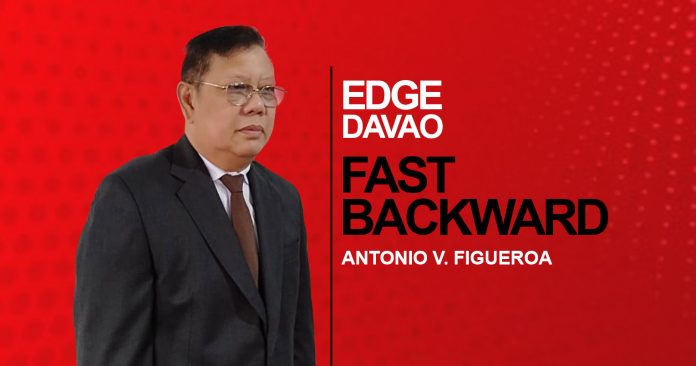Our personal search for Datu Bago, inspired no less by the euphoria elicited during the Philippine Independence centenary, started a quarter of a century ago. Part of the inquiry was due to the scarcity of details about the Davao hero even in missionary chronicles.
In the last half of 1998, as a matter of historical research, we filed three separate letters addressed to The Roman Catholic Archbishop of Manila, the Recoletos Formation Center in Quezon City, and the Chancery of the Cardinal Rosales Pastoral Center of the Archdiocese of Cebu. All three letters, for varied reasons, did not return any positive result.
The letter from the archbishopric of Manila, dated September 10, 1898, and signed by archives assistant Lea M. de la Paz, was helpful and enlightening, and it addressed three of our concerns, including information from the Recollects who were then given the ecclesial authority over some areas of Davao Oriental before Davao Gulf fell in Spanish hands.
The letter, in part, explains that the archdiocesan archive “only lists the kind of documents we have… and not their contents,” adding “the Archdiocese of Cebu had territorial jurisdiction over the Visayan islands and Mindanao from 1595 until the creation of the Diocese of Jaro in 1865.” Prior to the conquest of Datu Bago, Davao was under the authority of the diocese.
In the letter from the Recollect dated November 4, 1898, Fr. Emilio Edgardo A. Quilatan, OAR, the archivist, was brief and direct in his response:
“I checked our archival catalogue with regard to the history of Davao, and I also consulted our available printed documents and other books about our Augustinian Recollect history in Davao. To date, it is interesting to note that our available sources never mention of Datu Bago.
“What we have in our archives is a XIX century 10-page account on the flora and fauna and the geography and ethnography of Davao by a Recollect missionary.”
Then came the reply from the Archdiocese of Cebu dated December 1, 1998, signed by Fr. Marvin S. Mejia, vice-chancellor of Cebu, explaining why many of their records are gone:
“It is with much regret to inform [you] that we cannot provide you materials about Davao during Datu Bago’s time. All the records of the Archdiocese, except for a few documents, were destroyed during World War II. The only information we can give you, which you may already have, is a photocopy of the Proceedings and Position Papers of the 4th Regional Seminar on History… taken from the library of the University of San Carlos.”
Except for the epigraphic and genealogical research conducted by Dr. Macario Tiu of Ateneo de Davao University, the results of which have been published in his books, nothing much can be drawn from the Recollect and Jesuit chronicles.
The missionary accounts mention nothing about Datu Bago’s direct participation but point to Datu Ongay as the Guiangan chieftain who instigated the 1946 attack and burning at Pakiputan Strait (where the ferry service now crosses) of San Rufo, the trading ship from Manila.
In the Jesuit accounts, for instance, Datu Bago, using oral tradition and the narratives conveyed to the clergy during their pastoral works in the region, is cited only as the chieftain of an enclave that secured the passage from the rivermouth of Davao River to the interior regions.
The absence of evidence, however, is not equivalent to the evidence of absence.
Still, that argument does not answer the question of why in Sulu and Maguindanao accounts we do not find a detailed mention of the Davao chieftain, let alone find an entry about his involvement in any one piratical raid that took place in the Visayan regions during his rule.
What is clear from the reports, though, is that Datu Bago was not the ruler of the entire gulf but the kingpin of a small settlement that was beholden to the Maguindanao sultanate.




